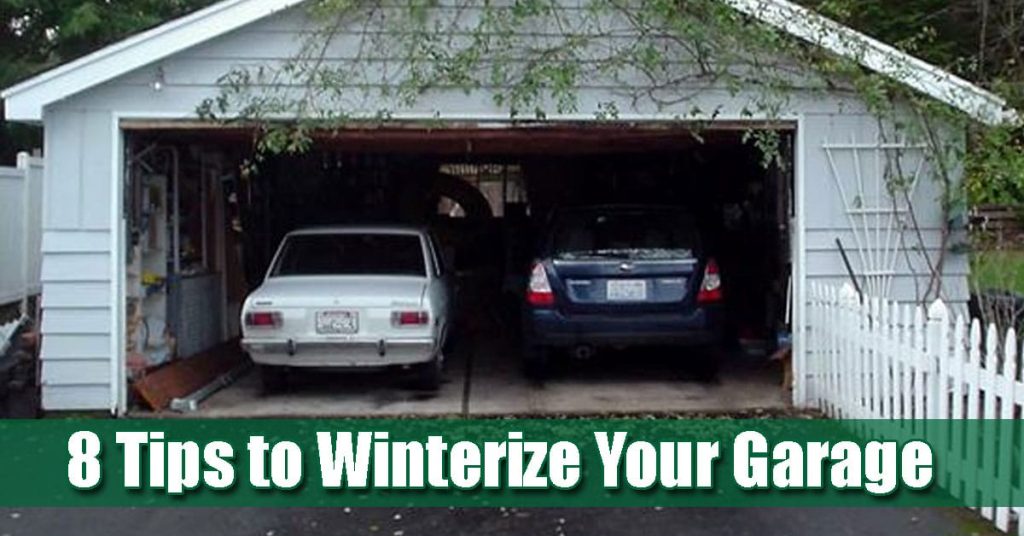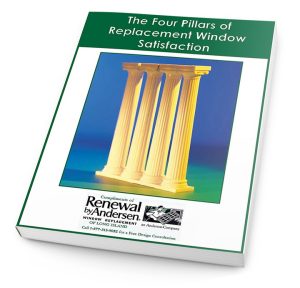

Garages store stuff, but storing doesn’t mean “that stuff” is protected from our harsh Long Island winter weather. The first step on the garage winterizing checklist is to check all the doors and windows to make sure there are no missing sections of weather-stripping or broken window panes or that will allow air and moisture flow freely into your heated spaces. A dark, cold, damp garage can lead to rust on the rake head and a gas appliance that won’t fire up when warm weather returns. Lubricating moving metal parts on the overhead doors is also recommended.
By the way, if you are still living with single-pane windows, this is the season to allow us to introduce you to twenty-first-century, high-performance replacement windows that will keep damage-causing moisture outdoors where it belongs. And, you need at least one window that opens easily, so you can air out your storage space on sunny days to ensure mold doesn’t take hold – yes, it is possible for mold and mildew to thrive even when the temperature takes a dive.
Home inspectors explain that moisture enables biological pollutants to grow because as the temperature goes down, the air cannot hold as much moisture. You’ll see water droplets forming on cold indoor surfaces – like single pane windows, plumbing pipes, aluminum water tanks, and that metal tool chest in the garage – as the moisture condenses. Excessive condensation is another sure sign your garage windows are due for an upgrade.
Here are eight tips for winterizing your garage – and extending the life of your tools and motorized gear.
#1. Start at the top. If your roof fails, all your seasonal prep may be futile. Check the roof for damage and remove all debris from gutters to ensure rain and melting snow are efficiently channeled away from the roof.
#2. Follow safe gasoline storage regulations. Toss the plastic gas can for a steel can with a built-in flame arrestor. Label the can with the date of purchase, and safely discard any fuel remaining on the 31st day to make sure your gas is fresh. If you use an ethanol-mix, ask your local small engine mechanic for a stabilizer recommendation to prevent degradation/deterioration.
#3. Power-mower maintenance is a breeze. Remove grass and debris from the undercarriage and sharpen the blade before you park your machine for the winter. An empty fuel tank is less likely to corrode while in storage so crank it up and let it idle until the fuel is gone and the mower dies. Don’t change the oil until you are ready to fire it up next spring – the oil will age and degrade over the next few months and you would just be wasting your time doing an oil change.
#4. Keep your gas leaf blower in top shape by changing the air filter before draining the gas. Zero-ethanol concentration is preferable, but 10% or less is acceptable for most brands and models (check your maintenance manual). This is a good time to clean or replace spark plugs. Remember to disconnect battery cables before working on your blower to prevent shock or other injuries.
#5. Rakes, shovels and other tools used for tending gardens and lawns need some TLC, too. Clean and sterilize the “working end” of your long handle tools. This ensures you won’t spread any diseases or germs picked up over the summer and fall when you return to gardening duty next year.
#6. Keep small hand tools sharp and rust free by storing them in a container filled with a mix of mineral oil and sand. (Clean them first – and, sterilize with scalding water – before storing)
#7. You shouldn’t have to replace the garden hose every year. Buying a high-quality hose will set you back $80 to $100, but if you remember to drain the hose completely every year and roll it up for storage, it should last a decade or more.
#8. Get your snow blower ready for action. Assuming you drained the tank and did some end of season maintenance after the last heavy snowfall this past winter, all you really need to do is change the oil and add fuel when the fluffy steps arrives. What? You didn’t drain the tank? If not, you may not have changed the shear pins and checked the shave plate either – both recommended before you start clearing the sidewalks and drive.
We hope these tips help you winterize your garage space before harsh winter weather arrives. If you found damaged windows that are ready to be retired, we invite you to call a professional replacement window specialist to discuss our full line of replacement window styles, ENERGY STAR certified glazing and beautiful hardware and accessories to keep your home comfy and attractive throughout the seasons. Just fill in the short form on this page or call (866) 609-5033 for more information.

Learn Everything You Need to Know BEFORE Buying Replacement Windows